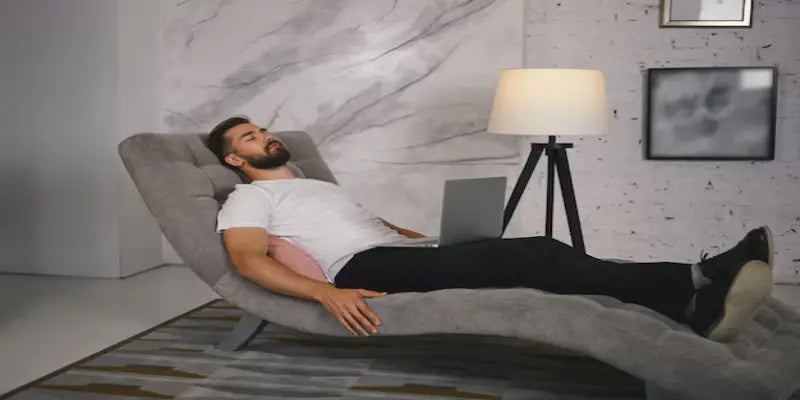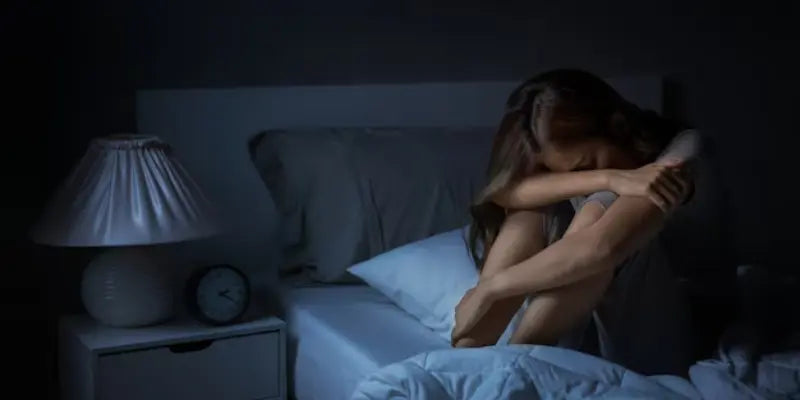
Tips for Sleeping Better with Restless Leg Syndrome
Restless legs syndrome (RLS), also known as Willis-Ekbom Disease, is a neurological condition that causes unusual and uncomfortable tingling, aching, and itching sensations in your legs at night. The nearly overwhelming impulse to move your legs when you lie down or relax might linger for hours, preventing you from getting the sleep you require and having a negative impact on your waking life.
Restless legs syndrome can affect anyone, although it is most frequent in elderly persons and women. Mild RLS symptoms may appear in early adulthood and progress with age. After age 50, RLS symptoms frequently worsen and seriously interrupt sleep. Restless legs syndrome is also frequent during pregnancy (around 40% of pregnant women have it).
If you have restless legs syndrome, a normal night could look like this: You lie down in bed, ready to sleep, and just as your body begins to relax, your legs start creeping, tingling, or itching. You try to ignore the painful sensations, hoping they will go away, but finally the impulse to move becomes too strong. You get out of bed to stretch and pace the floor, and for a time, you feel relieved. However, once you lie down again, the restless sensations in your legs return.
What is Restless Leg Syndrome?
Restless Leg Syndrome is a neurological condition that causes uncomfortable sensations in the legs, often described as:
- Tingling
- Crawling
- Itching
- Throbbing
- Aching
These sensations usually occur when sitting or lying down, particularly at night, and are temporarily relieved by moving your legs. This can make it hard to fall or stay asleep, leading to fatigue and daytime drowsiness.
What Causes RLS?
The exact cause of RLS isn’t fully understood, but researchers believe it’s linked to how the brain processes dopamine, a chemical that helps control muscle movement. Other factors that may contribute to RLS include:
- Genetics: RLS often runs in families, especially if symptoms start before age 40.
- Iron Deficiency: Low levels of iron in the brain can trigger RLS.
- Pregnancy: Many women experience RLS during pregnancy, especially in the third trimester.
- Chronic Conditions: Conditions like kidney disease, diabetes, and peripheral neuropathy are often associated with RLS.
- Medications: Certain drugs, such as antihistamines or antidepressants, can worsen symptoms.
- Lifestyle Factors: Caffeine, alcohol, and lack of exercise also play a role.
How is RLS Diagnosed?
There’s no specific test for RLS, but doctors typically diagnose it based on your symptoms and medical history. They may ask questions like:
- Do you feel an urge to move your legs due to uncomfortable sensations?
- Do symptoms worsen at rest and improve with movement?
- Are symptoms worse in the evening or at night?
Your doctor might also order blood tests to check for iron deficiency or other underlying conditions.
Top Tips to Get Quality Sleep with Restless Leg Syndrome
Maintain a Regular Bedtime
Going to bed and waking up at the same time every day improves sleep quality for almost everyone. When you have RLS, it may break a negative cycle in which weariness exacerbates your symptoms and the twitching and tingling disrupts your sleep for another night. Pay attention to how much sleep you require to feel your best. Most adults require seven to nine hours each night.
Stretch Before Sleep
Before going to bed, do some light stretching. Step forward and bend your front leg while maintaining your back leg straight in a slight lunge to stretch your calf muscles. You can support yourself by placing your hand against a wall. Repeat on the opposite side. Stretching is also beneficial if you have been sitting for a long time.
Make Exercise a Habit
Moderate activity during the day results in improved sleep at night. Walk, jog, lift weights, or do whatever activity you enjoy. According to one study, exercise reduced leg activity and allowed persons with RLS to sleep longer and deeper. Take care not to overdo it. Intense exercise or working out right before bedtime may worsen your symptoms.
Massage Your Legs
A calf massage before bedtime may relieve your RLS symptoms and help you fall asleep. You can perform it yourself or share mini-massages with a family member. Give your lover a 10-minute shoulder massage, followed by a leg massage and deep relaxation.
Avoid alcohol and cigarettes
Alcohol and smoking can worsen RLS symptoms while also disrupting your sleep. A drink may make you drowsy at first, but you're more likely to wake up during the night or get bad sleep that leaves you feeling tired. Nicotine in cigarettes causes RLS symptoms, therefore avoid cigars, "chew," and other tobacco products.
Eat protein snack before bed
To maintain blood sugar stability, take a protein snack before bedtime, such as a hard-boiled egg, a piece of chicken, or pork. Low blood sugar triggers RLS, while protein stabilizes it. Avoid carbohydrates or sweets before bedtime, as they induce a spike and subsequently a collapse in blood sugar.
Use a knee pillow
This pillow is the ultimate in pressure and discomfort alleviation, providing excellent support for the knees, thighs, and lower back. The hourglass form provides for ideal placement pillow between the knees and the upwards thigh area. If you don’t own a knee pillow, you can use your regular pillow.
Wear compression stockings while working out
The stockings act with your muscles to move blood out of your leg's veins and prevent it from pooling. Pooled blood might add to the symptoms of restless leg syndrome.
Also Read:- How do You Sleep with a Knee Pillow?
Conclusion
Managing Restless Leg Syndrome can be difficult, but with the right tips and assistance, you can get more comfortable sleep and wake up feeling refreshed. By implementing these tips into your evening routine and contemplating the usage of a knee pillow, you can take proactive measures toward improved sleep with RLS. Remember that sleep health is critical for general well-being and quality of life.
In addition to these tips, many people with RLS find relief by using a knee pillow during sleep. A knee pillow can help align the hips and relieve pressure on the lower back, reducing discomfort and promoting better sleep posture. By supporting the natural curvature of the spine, a knee pillow can help alleviate RLS symptoms and improve overall sleep quality.








